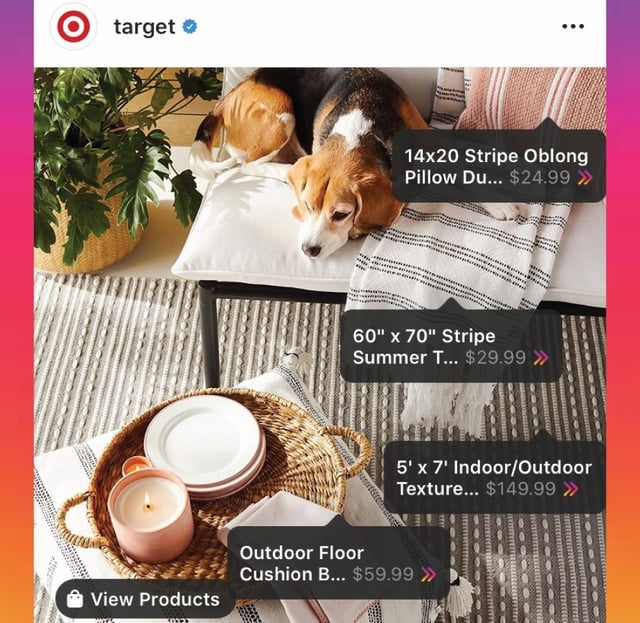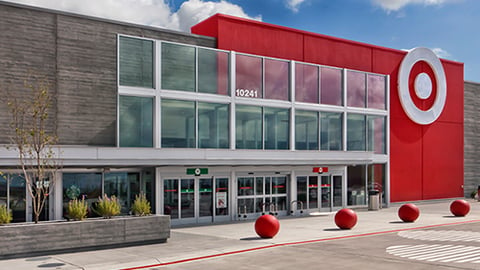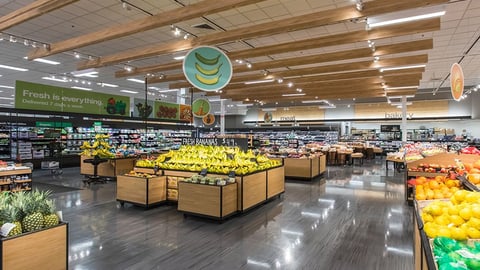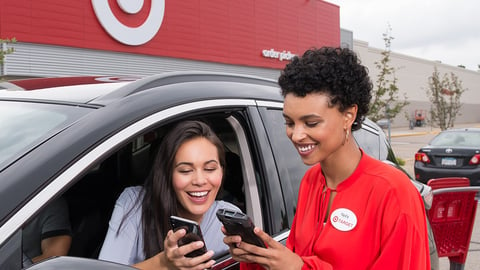Target Turns Instagram Into Another Storefront
It may be only a matter of time before shoppers can buy inflatable pools, dog treats and a rack of ribs from Target on Instagram.
On May 21, Target became the first mass retailer to make its products available through Instagram Checkout.
“More and more guests are searching for digital shopping options, and we’re continuing to invest in experiences that allow them to get what they need from Target whenever, wherever and however they want,” said Dawn Block, the retailer's SVP, digital. “We know our guests are already using Instagram, so we’re making it even easier for them to find and buy the quality, affordable products they expect from Target.”
How does it all work? Thanks to a solution designed by Target’s tech team, guests can now purchase products displayed in @Target and @TargetStyle posts directly through Instagram.
Each shoppable post is marked with a shopping bag icon in the corner. From there, shoppers can tap on a product; modify (like choose a color or size, if applicable); and check out — all without leaving Instagram. For their first purchase, shoppers will need to enter shipping and payment info at checkout. And after that first purchase, shoppers can complete the entire process with just two clicks.
“We want to make it easy for people to instantly shop every product they discover on Instagram,” said Instagram COO Justin Osofsky. “That’s why we collaborated with Target to set up a virtual store that makes discovery to purchase seamless right in the app with Instagram Checkout.”
Target recently reported stellar Q1 results and said it would accelerate its online grocery efforts to meet a crush of demand from consumers.
In a first-quarter earnings call, Target COO John Mulligan said that shoppers are asking for more fresh food from the company's Drive Up curbside pickup service. As a result, the retailer is currently in the process of adding additional Drive Up parking spots to store lots nationwide and adding temperature-controlled fresh/frozen storage space in stores to facilitate more online grocery orders.
“Drive Up accelerated to 1,000% growth in the month of April,” Mulligan said. “You’ll see us add parking slots over the next several months and adding incremental storage space for the store teams. Our plan now is to accelerate this to get it in as many stores as possible over the next several months, because clearly, it’s something that our guests would like our stores to deliver.”
The push to accelerate grocery pickup comes a few months after the retailer said that it was pausing "incorporating fresh grocery and adult beverages into Order Pickup and Drive Up services until later, when the team has more time to train and prepare for the changes. We’ll revisit these projects and set a new date." Now it seems that overwhelming demand for grocery pickup has led Target not only to restart, but also accelerate efforts to add as much fresh food into its pickup services as possible.
Target said its digital sales growth accelerated from 33% in February to about 100% in March to 282% in April, for a total first-quarter e-commerce increase of 141%. Target’s same-store sales grew by 10.8% in the first quarter ended May 2, compared with the same period a year prior.
The company noted that its stores enabled digital volumes totaling more than 80% of its e-comm sales in April, totaling more than $1.1 billion compared with last year. Store fulfillment accounted for more than $950 million of that growth as both same-day services and shipments to guest homes saw significant increases. Its same-day services, including Drive Up and Shipt delivery, grew by 278%.
Target operates more than 1,800 stores, 39 distribution centers and Target.com. The Minneapolis-based company is No. 7 on The PG 100, Progressive Grocer's 2020 list of the top food retailers in North America.











